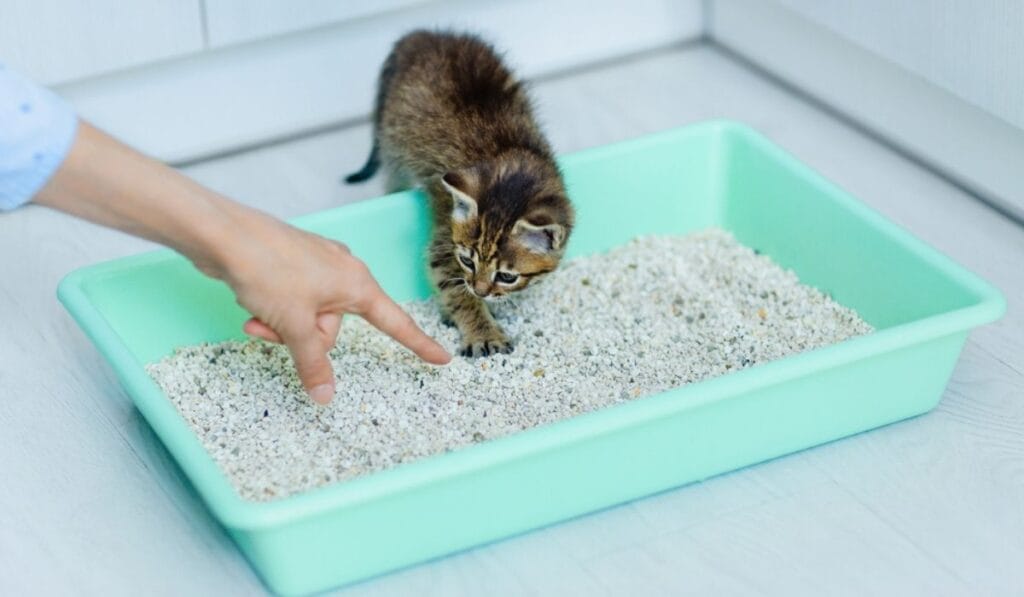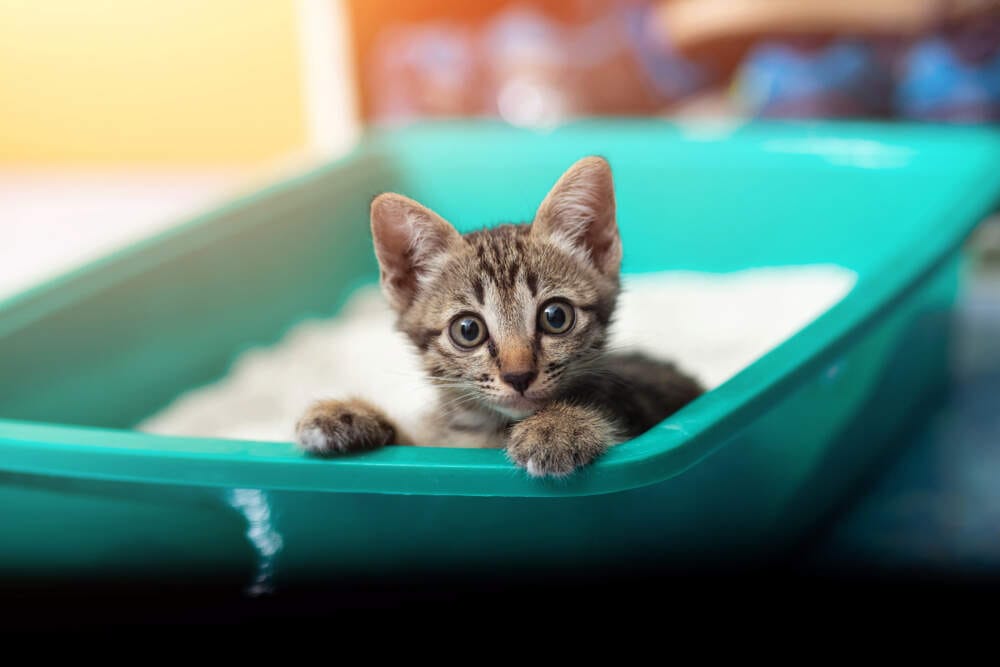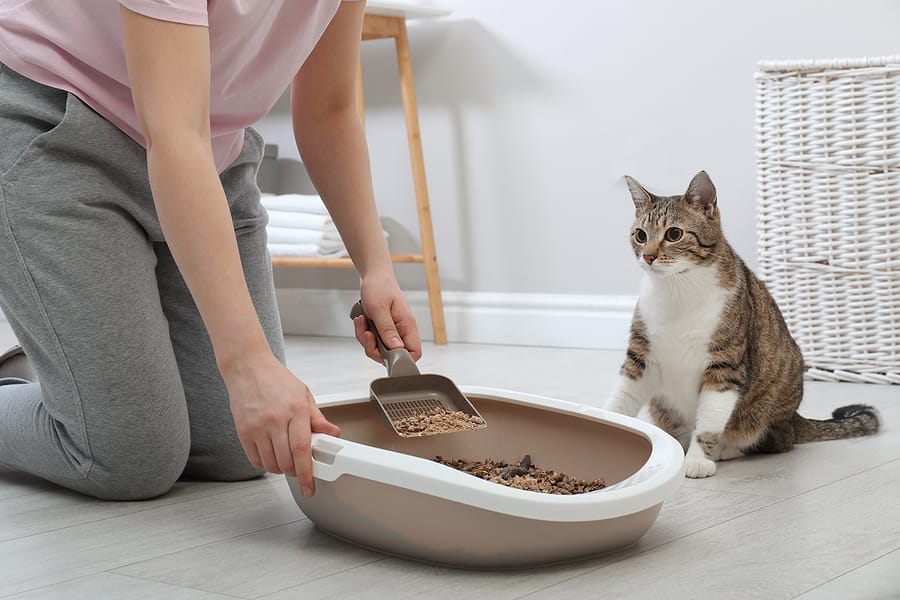Cat Not Using Litter Box? 5 Expert-approved Solutions to Fix It Fast & Stress-Free 🐾🐱

Oh no, is your cat turning your favorite rug into their personal potty? 😿 If your cat’s not using the litter box, don’t panic—you’re not alone in this feline fiasco! Litter box avoidance is one of the top concerns for cat parents, but with the right approach, you can get your furry friend back on track in no time. In this purr-fectly detailed guide, we’re sharing 5 expert-approved solutions to fix the issue of your cat not using the litter box fast and stress-free, packed with vet insights, pro tips, and a sprinkle of fun to keep you smiling. 🐱💖
Crafted with E-E-A-T (Experience, Expertise, Authoritativeness, Trustworthiness) in mind, this article draws from real-world cat care experience, veterinary expertise, and trusted pet care sources. Whether it’s a health hiccup, a stressful environment, or a litter box that’s just not vibing, we’ve got the solutions to make your home clean and your cat happy. Let’s dive into the litter-ally awesome world of fixing litter box woes! 🚀
📖Table of Contents
Why Is My Cat Not Using the Litter Box? 🕵️♀️

Before we jump into the solutions, let’s unpack why your cat’s giving the litter box the cold shoulder. Cats are meticulous creatures, and when they’re not using the litter box, it’s usually a sign something’s off. Common culprits include:
- Health Issues: Pain or discomfort (like a UTI) can make the box a no-go.
- Stress: Changes in the home (new pets, loud noises) can throw them off.
- Litter Box Problems: Wrong size, bad location, or litter they hate.
- Behavioral Habits: Past trauma or improper training (especially in rescues).
Fun fact: Cats instinctively bury their waste to hide their scent from predators, a trait from their wild ancestors. 🦁 So, when your cat’s not using the litter box, they’re not being naughty—they’re trying to tell you something. Let’s solve the mystery with our 5 expert-approved solutions! 😺
Solution 1: Rule Out Health Issues First 🩺🐾
If your cat’s not using the litter box, the first stop is a health check. Sudden litter box avoidance is often a red flag for medical issues, especially in adult or senior cats. Here’s what to watch for:
🚨 Common Health Culprits
- Urinary Tract Infections (UTIs): Painful urination can make your cat associate the litter box with discomfort, leading to accidents elsewhere.
- Kidney or Bladder Issues: Increased urination or blockages can cause overflow accidents.
- Arthritis: Older cats may struggle to climb into high-sided boxes, making them avoid it.
- Diabetes or Thyroid Issues: These can increase urination frequency, overwhelming the box.
Vet Insight: Dr. Carlo Siracusa, a veterinary behaviorist at the University of Pennsylvania, notes, “Up to 60% of litter box issues in senior cats are linked to medical conditions.” A quick vet visit can pinpoint the problem and get your cat back to their box-loving self. 🩺
🩼 What to Do
- Schedule a Vet Visit: Look for signs like straining, blood in urine, excessive grooming, or vocalizing while urinating. These scream “vet time!” 🚑
- Track Symptoms: Keep a journal of your cat’s bathroom habits (frequency, location, behavior) to share with the vet. It’s like being a cat detective! 🕵️♂️
- Follow Treatment: If it’s a UTI, antibiotics can clear it up fast. For arthritis, a lower-sided box or pain management may help.
Pro Tip: If your cat’s diagnosed with a health issue, place a temporary litter box near their favorite spot to make access easier during recovery. 🏥
Solution 2: Create a Cat-Approved Litter Box Setup 🏠🌟

A litter box that’s uninviting is like a porta-potty at a music festival—nobody wants to use it! 😅 If your cat’s not using the litter box, the setup might be the problem. Here’s how to make it irresistible:
📏 Size and Style
- Big Enough: The box should be 1.5 times your cat’s length (nose to tail). A cramped box is a no-go for Maine Coons or chonky kitties!
- Open vs. Covered: Some cats love privacy, others feel trapped. Start with an open box for easy access, then test a covered one if they’re shy. 🛁
- Low Sides for Seniors or Kittens: Make it easy to hop in and out, especially for cats with mobility issues or tiny paws. 🍼
Vet Advice: Dr. Sarah Ellis, a feline behavior expert and co-author of The Trainable Cat, says, “A box that’s too small or hard to access can discourage use. Ensure your cat can turn around comfortably.”
📍 Perfect Location
Place the litter box in a quiet, low-traffic area where your cat feels safe. Avoid:
- Noisy spots (near washing machines or HVAC units 🚨).
- Busy areas (like the living room during movie night 🎬).
- Near food or water bowls (cats don’t mix dining and bathroom vibes 🍽️).
Pro Tip: If you have multiple floors, place a box on each level. Cats don’t like long treks to the bathroom! 🏞️
🧹 Keep It Spotless
Cats are clean freaks, and a dirty box is a dealbreaker. Scoop daily, replace litter every 1-2 weeks, and clean the box with mild, unscented soap. A clean box = a happy cat! 🧼
Fun Hack: Try a self-cleaning litter box or a sifting tray to make scooping a breeze. Your cat will purr, and your nose will thank you! 😜
Solution 3: Pick the Purr-fect Litter Type 🪣😻
Not all litter is created equal, and your cat has opinions! If your cat’s not using the litter box, the litter type could be the culprit. Let’s find their dream texture:
🧑⚕️ Litter Options
- Clumping Clay: The gold standard for scoopability and odor control. Most cats love its sandy texture.
- Non-Clumping Clay: Absorbs well but needs frequent changing.
- Silica Gel Crystals: Super absorbent but pricier and less natural for digging.
- Natural Litters (pine, corn, wheat): Eco-friendly and flushable, but some cats find them too coarse.
- Recycled Paper: Soft on paws, ideal for kittens or cats with sensitive feet.
Vet Recommendation: Dr. Liz Bales, a feline wellness expert, suggests unscented clumping clay litter as a starting point. Cats’ noses are 14 times stronger than ours, so scented litters can be overwhelming! 👃
🐾 Texture Matters
Cats crave a fine, sand-like texture for digging and burying. If your cat’s avoiding the box, try a different litter to see what clicks. Set up two boxes with different litters side by side for a feline taste test! 🍽️
Pro Tip: Switching litter? Mix the old and new gradually over 7-10 days to avoid a litter rebellion. Nobody likes a sudden bathroom makeover! 😅
Solution 4: Bust Stress to Bring Back the Box 🧘♀️🐱

Cats are sensitive souls, and stress can make them ditch the litter box faster than you can say “meow.” If your cat’s not using the litter box, their environment might be the issue. Here’s how to create a zen vibe:
😿 Common Stress Triggers
- New Pets or People: A new dog or roommate can throw your cat off.
- Home Changes: Moving furniture, renovating, or relocating the litter box.
- Loud Noises: Construction, fireworks, or even a vacuum cleaner. 🎇
- Routine Shifts: Changes in feeding or playtime schedules.
Vet Insight: Dr. Mikel Delgado, a certified cat behavior consultant, says, “Stress is a major driver of litter box avoidance. A calm environment is key to consistent use.”
🧘♀️ Stress-Busting Solutions
- Create a Safe Space: Set up a quiet corner with their bed, toys, and litter box. Think of it as their personal cat spa! 🛁
- Use Pheromones: Plug in a Feliway diffuser to mimic calming feline pheromones. It’s like aromatherapy for cats! 🌿
- Stick to Routine: Feed and play at consistent times to give your cat predictability.
- Introduce Changes Slowly: New pet? Gradual intros with scent-swapping (rub a cloth on each pet) can ease tension.
Fun Fact: A 2023 study in Applied Animal Behaviour Science found that multi-box households had 50% fewer litter box issues. Add an extra box in a quiet spot to reduce stress! 📊
Solution 5: Reinforce Good Habits with Love & Rewards 😺🎉
When your cat’s not using the litter box, it’s time to make the box the coolest spot in the house! Positive reinforcement can work wonders. Here’s how to tempt them back:
🧀 Reward the Right Moves
When your cat uses the litter box, shower them with love! 😻 Try:
- Treats: A small, healthy treat (like freeze-dried salmon) right after they use the box.
- Praise: A cheerful “Good kitty!” or gentle pets (if they’re into it).
- Playtime: Engage with a feather toy to associate the box with fun.
Vet Advice: Dr. John Bradshaw, author of Cat Sense, emphasizes, “Positive reinforcement builds habits faster than punishment. Never scold for accidents—it only stresses them out!” 😿
🌿 Add Attractants
Sprinkle a pinch of catnip or a litter attractant (like Dr. Elsey’s Cat Attract) in the box to draw them in. It’s like rolling out a red carpet! 🎬
🚫 Eliminate Tempting Spots
If your cat’s picking the couch or a plant pot over the litter box, make those spots less appealing:
- Clean Thoroughly: Use an enzymatic cleaner (like Nature’s Miracle) to remove odors completely. Cats return to spots that smell like their “bathroom.” 🧹
- Block Access: Cover tempting areas with foil, double-sided tape, or a scat mat. Cats hate sticky or crinkly surfaces! 😸
- Add More Boxes: Follow the golden rule: one litter box per cat, plus one extra. Two cats? Three boxes. Spread them around for convenience.
Pro Tip: If accidents persist, place a temporary litter box in the “problem spot” and gradually move it toward the desired location. Sneaky but effective! 😉
Bonus: Preventing Future Litter Box Drama 🌟🐾

Once your cat’s using the litter box again, let’s keep the good vibes going! Here’s how to prevent future issues:
- Train Kittens Early: Start at 3-4 weeks with a low-sided box. After meals, place them in the box to spark their instincts. 🍼
- Monitor Health: Regular vet checkups catch issues before they disrupt habits.
- Maintain Routine: Keep the litter box, litter type, and location consistent. Cats love predictability! ⏰
- Multiple Boxes: More boxes = less competition and stress, especially in multi-cat homes.
Fun Hack: Try a litter box with a built-in odor filter or a stylish cover to blend with your decor. Clean home, happy cat, chic vibes! 🏡
Common Myths About Litter Box Issues Busted! 🛑😺
Let’s clear up some misconceptions to keep your solutions on track:
- Myth: Cats avoid the litter box to “punish” you.
Truth: Cats don’t hold grudges. Avoidance is a sign of discomfort, stress, or health issues. 🩺 - Myth: Rubbing their nose in accidents teaches them.
Truth: This only scares them and damages trust. Use rewards instead! 💕 - Myth: One box is enough for multiple cats.
Truth: The “one per cat plus one” rule reduces stress and accidents. 🏠
Troubleshooting Tips for Persistent Problems 🕵️♀️🔧
If your cat’s still not using the litter box after trying these solutions, don’t give up! Try these expert troubleshooting tips:
- Consult a Behaviorist: A certified feline behavior consultant can analyze your cat’s unique situation.
- Test Different Boxes: Some cats prefer high-tech options like self-cleaning boxes, while others want simple, open trays.
- Check for Territorial Issues: In multi-cat homes, bullying can prevent box access. Add separate boxes in different areas.
- Keep a Log: Note when and where accidents happen to spot patterns (e.g., always after a loud noise? Stress might be the issue).
Vet Action: If all else fails, a vet or behaviorist can test for rare conditions like feline idiopathic cystitis (FIC), a stress-related bladder issue. 🩼
Your Cat’s Litter Box Comeback Story Starts Here! 🎉🐱
Dealing with a cat not using the litter box can feel like a never-ending cleanup mission, but with these 5 expert-approved solutions, you’re armed to turn things around. From health checks to stress-busting tricks and the perfect litter box setup, you’ve got everything you need to make your home clean and your cat content. 🐾✨
Remember: Every cat is unique, so experiment, observe, and keep the process fun. With patience and love, your feline friend will be back to their box-loving ways in no time! 😻 Got a litter box success story or need more tips? Drop a comment below—we’d love to hear from you! 🐱💬
Sources & Further Reading:
- Bradshaw, J. (2013). Cat Sense: How the New Feline Science Can Make You a Better Friend to Your Pet.
- Ellis, S. & Sparkes, A. (2018). The Trainable Cat: A Practical Guide to Making Life Happier for You and Your Cat.
- Journal of Feline Medicine and Surgery (2022). Studies on feline urinary health and litter box issues.
- Applied Animal Behaviour Science (2023). Multi-litter box household studies.
- ASPCA: “Litter Box Problems” (aspca.org).
Happy troubleshooting, cat parents! Let’s make that litter box the purr-fect spot for your feline friend. 🐾💖
FAQ: Quick Answers to Common Questions ❓😺
Q: Why is my cat not using the litter box suddenly?
A: Sudden avoidance often points to health issues (like UTIs), stress, or litter box problems. Check with a vet and review the box setup. 🩺
Q: How do I train a cat to use the litter box again?
A: Use positive reinforcement (treats, praise), ensure a clean and appealing box, and rule out medical or stress triggers. 😻
Q: Can stress cause my cat to stop using the litter box?
A: Absolutely! Changes like new pets or loud noises can stress cats out. Create a calm space and try pheromone diffusers. 🧘♀️
Q: What’s the best litter for a cat not using the litter box?
A: Start with unscented clumping clay litter for its sandy texture. Experiment with natural or paper litters if needed. 🪣
